Introduction
Jet fuel prices play a crucial role in the aviation industry's cost structure, and understanding their dynamics is essential for airlines' financial planning and operational strategies. With average prices ranging between $2.50 and $3.00 per gallon, fuel costs are subject to fluctuations influenced by factors such as crude oil market trends, geopolitical tensions, and shifts in air travel demand. Recent movements in Brent International and West Texas Intermediate oil prices highlight the volatility, with Saudi Arabia's production cuts and Russia's reduced exports further complicating the landscape.
As the industry moves towards sustainable practices, the availability and cost of alternative fuels become increasingly pertinent. These developments occur amidst a commitment to net-zero emissions by 2050, emphasizing the need for innovation in fuel technology and efficiency. In this article, we will explore the historical trends of jet fuel prices, the impact of fuel costs on airline expenses, the variability in fuel costs among airlines, fuel hedging strategies, the effect of fuel prices on airline ticket prices, global and regional fuel price variations, and the forecast and future outlook for jet fuel prices.
By delving into these topics, we will gain insights into the complex interplay between fuel costs and the aviation industry, shedding light on the challenges and opportunities that lie ahead.
Current Jet Fuel Prices
Jet fuel prices are a dynamic and critical component in the aviation industry's cost structure. As of 2023, airlines are navigating a landscape where jet fuel costs average between $2.50 and $3.00 per gallon. This pricing, however, is subject to fluctuations influenced by a range of factors such as crude oil market trends, geopolitical tensions, and shifts in the demand for air travel.
For example, recent movements in Brent International (BZ=F) and West Texas Intermediate (CL=F) oil prices underscore the volatility, with Saudi Arabia's production cuts and Russia's reduced exports further complicating the landscape. These factors underscore the importance for airlines to stay abreast of market changes to manage their financial planning and operational strategies effectively. As the industry also moves towards sustainable practices, with companies like Airbus aiming for 100% SAF-capable aircraft by 2030, the cost and availability of alternative fuels are becoming increasingly pertinent.
These developments are occurring against a backdrop of a commitment to net-zero emissions by 2050, as outlined by IATA, emphasizing the need for innovation in fuel technology and efficiency.
Historical Price Trends of Jet Fuel
Jet fuel prices have been a rollercoaster over the last ten years, shaped by a myriad of factors such as economic shifts, geopolitical events, and oil production changes. Airlines, in response to this volatility, have become adept at predicting and bracing for the potential swings in fuel pricing. This forward-looking approach is crucial for crafting strategies aimed at minimizing financial turbulence.
In recent news, fuel prices have once again moved center stage as Brent International crude oil hit $90.04 per barrel and West Texas Intermediate (WTI) crude reached $86.69 per barrel, levels not seen since the previous November. These price hikes followed announcements of prolonged production cuts by Saudi Arabia and a sizeable export reduction by Russia, accompanied by the ongoing OPEC+ reductions initiated last year.
The implications of these developments are considerable. To put it in perspective, the global oil production stood at approximately 93 million barrels per day in 2021, with the United States consuming around 20 million of those. As the global economy is poised for a 2.9% growth in real GDP for 2023, the demand for oil is only set to increase.
These production cuts, almost three million barrels per day, are substantial enough to shift market dynamics, potentially driving oil prices towards the $100 mark again.
These trends underscore the sensitivity of certain industries to oil fluctuations, with the airline sector being particularly affected. In fact, the NYSE Arca Airline Index (XAL), which tracks the performance of the airline industry, reflects this susceptibility through the share prices of its constituent companies.
For airlines, the task of managing the unpredictability of fuel costs is an ongoing challenge, one that requires constant vigilance and adaptation to ensure economic stability and competitive standing in a dynamically evolving market.

Impact of Fuel Costs on Airline Expenses
Navigating the complexities of fuel expenses, airlines are keenly aware that jet fuel can signify up to 30-40% of their operational costs. As the aviation industry grapples with fluctuating fuel prices, carriers like Frontier Airlines are pioneering the use of advanced technologies to trim fuel consumption. Frontier tested Digital Winglets, which integrate NASA's TASAR technology, achieving a 2% reduction in fuel usage—translating to substantial savings at scale.
Similarly, piloting strategies are evolving. With the advent of digitally connected aircraft, pilots can now modify flight plans in real-time, utilizing technologies that assist in identifying the most fuel-efficient routes. This digital agility not only conserves fuel but also minimizes delays, enhancing operational efficiency and potentially yielding cost reductions.
As the industry continues to face the pressures of a global economy with an insatiable thirst for oil, the innovations in fuel efficiency couldn't be timelier. With oil consumption patterns indicating a persistent rise paralleled by a robust GDP growth forecast, the aviation sector is acutely affected by market shifts. Innovations in fuel management, therefore, serve as both a financial strategy and a nod to the future of sustainable aviation.
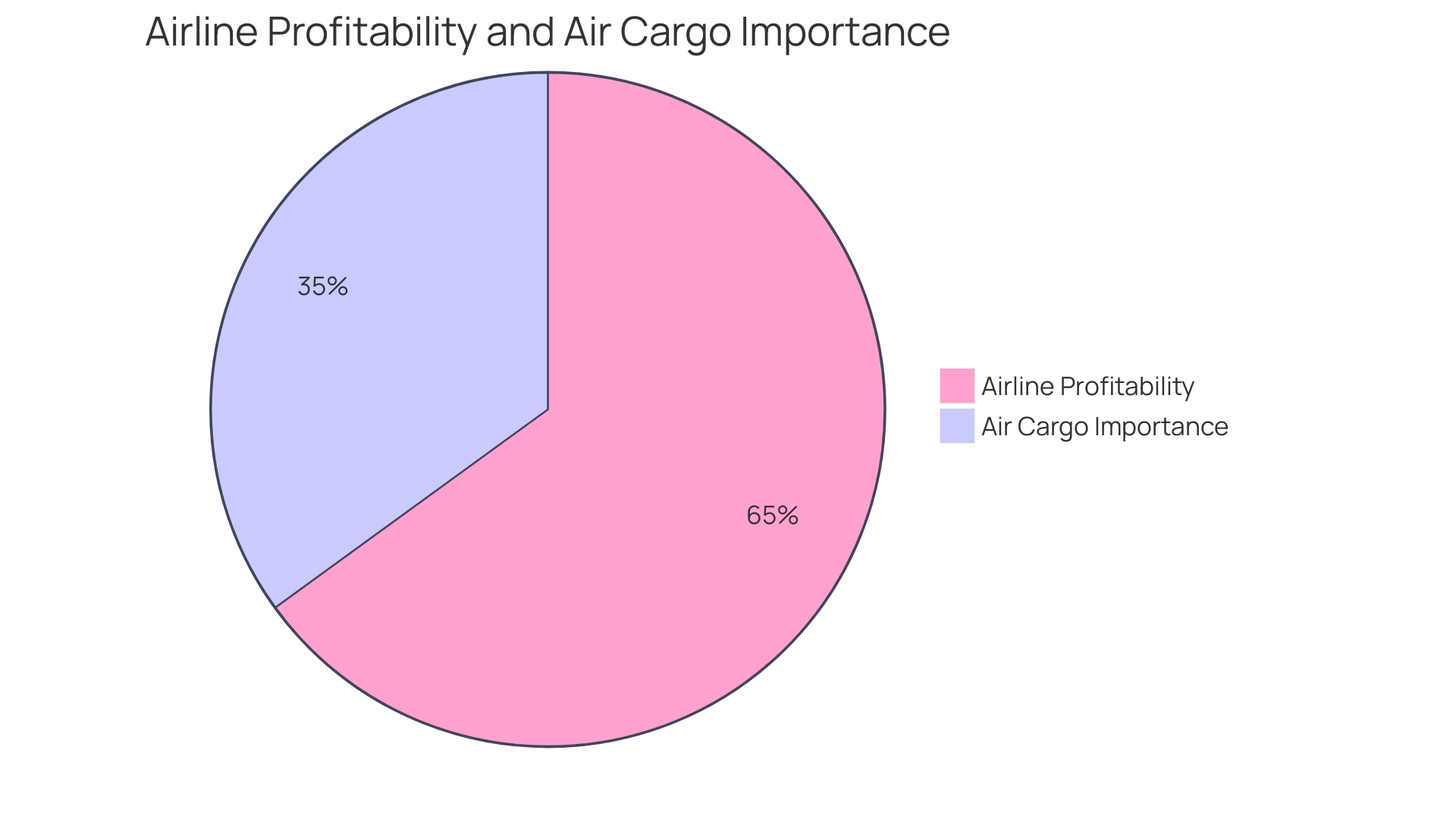
Variability in Fuel Costs Among Airlines
Airlines today face a complex and dynamic landscape when it comes to managing fuel costs, which can significantly impact their operational expenses. The size of an airline's fleet and the fuel efficiency of their aircraft play pivotal roles in determining overall fuel expenses. Larger airlines often have the advantage of negotiating more favorable fuel prices due to their scale, which can translate into cost savings.
Furthermore, fuel hedging strategies are employed by some carriers to protect against volatility in fuel prices, providing a buffer that can help stabilize financial forecasts.
Recent trends in the airline industry have seen a shift towards unbundling services, which has led to an increase in hidden fees. According to research, U.S.-based airlines charge an average of $78.04 per ticket in additional fees, a strategy that disguises the true cost of flights. This practice of unbundling services, while claiming to offer customers more choice, has drawn criticism for its lack of transparency and the burden it places on consumers.
Moreover, the airline industry has reported record earnings in 2023 as a result of strong demand, high fares, and a decrease in jet fuel prices. However, these costs are subject to a variety of influencing factors, including airline capacity, local inflation, foreign exchange rates, and fuel surcharges. The latter half of the year saw an uptick in fuel costs due to a 25% increase in the price of oil since the end of June, following production cuts by major oil-producing countries.
With the industry's net profits expected to reach $25.7 billion in 2024, representing a 2.7% net profit margin, it is essential for airlines to continue evaluating and adapting their fuel procurement and management strategies to maintain a competitive edge and ensure financial stability in the face of fluctuating market conditions.
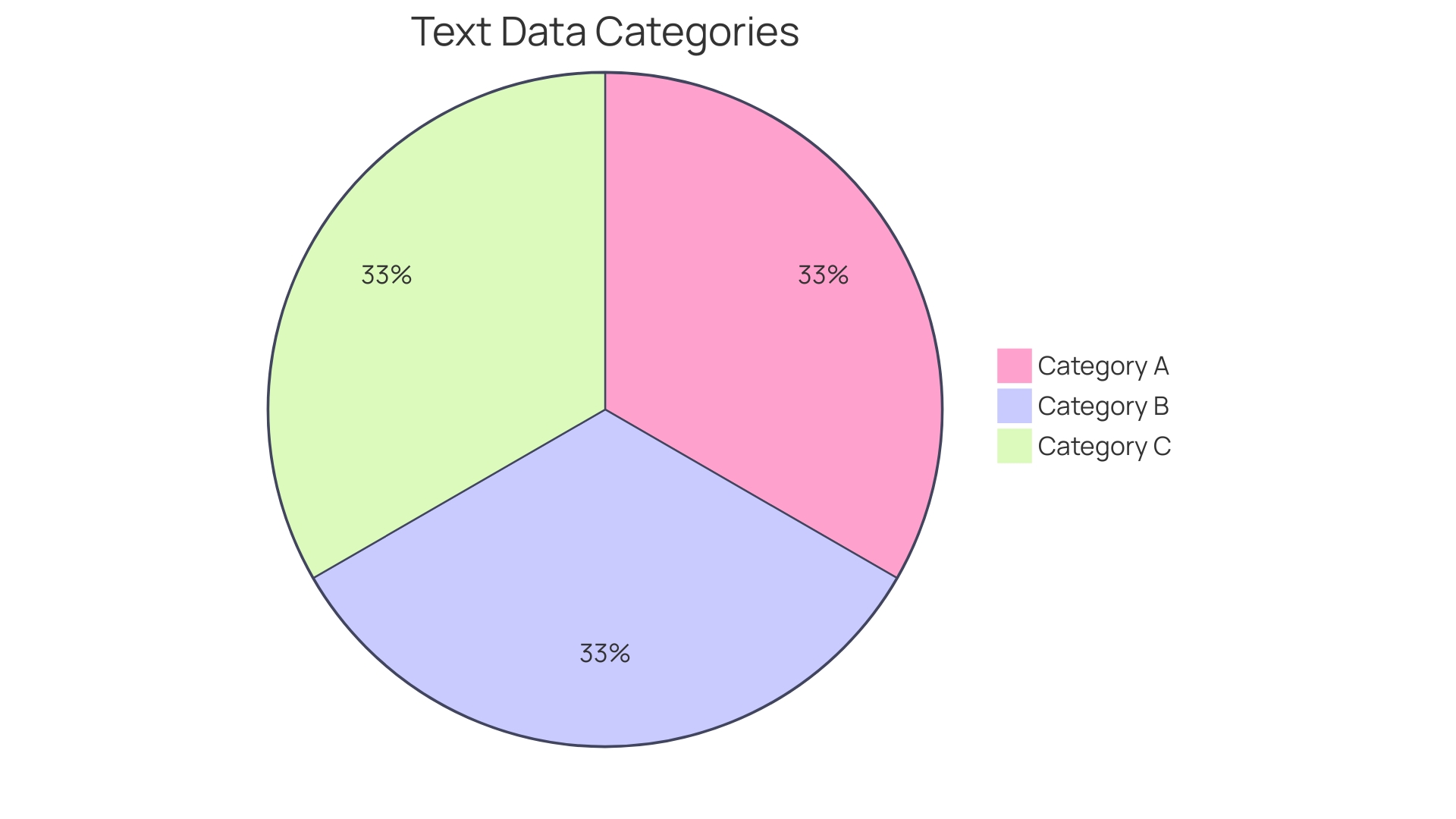
Fuel Hedging Strategies by Airlines
Airlines employ fuel hedging to mitigate the unpredictable nature of fuel costs, a major expenditure in the aviation industry. This risk management tactic involves setting up financial contracts—futures, options, swaps—to lock in fuel prices, helping airlines budget with greater certainty. However, hedging is not without its perils; a drop in fuel prices can lead to substantial financial setbacks.
In response to changing market dynamics, airlines must adeptly navigate their hedging strategies, as underscored by Shane Tackett's reflections on reevaluating their hedging approach amid evolving industry conditions. The volatility of fuel prices is evident in recent trends, with a notable increase in jet fuel costs post-Labor Day, impacting major U.S. airlines' operational expenses during a peak travel period. This underscores the importance of strategic hedging, as fuel prices can significantly influence airline profitability.
As airlines like Southwest Airlines continue to hedge, and others reconsider their strategies, the complexity of managing aviation fuel expenses is highlighted, requiring a balance between financial prudence and market responsiveness.
Effect of Fuel Prices on Airline Ticket Prices
Understanding the interplay between fuel costs and airline ticket pricing is crucial for travelers. The relationship is not always straightforward, as evidenced by recent trends. Even as global oil production hovers around 93 million barrels per day, significant cuts by major oil-producing nations have led to a substantial increase in oil prices.
For instance, unilateral production cuts by Saudi Arabia and Russia have contributed to a 25% increase in the price of oil since June, with benchmarks like West Texas Intermediate Crude (WTIC) reaching over $86 per barrel.
Despite these macroeconomic pressures, airline ticket prices in the United States have displayed a surprising trend. According to American Express Global Business Travel, average ticket prices are not projected to rise substantially. This counterintuitive situation is partly due to increased airline capacity and a recent decrease in jet fuel costs.
Hopper's lead economist, Hayley Berg, notes that domestic airfares are currently lower than in 2023 and prior years, with February's average round-trip fare sitting at approximately $276, marking an 8% reduction from the previous year.
These pricing dynamics reflect a complex array of factors, including intense market competition and evolving consumer demand. Airlines are navigating these challenges while managing pricing strategies to maintain profitability without alienating customers. The industry's resilience is underscored by Delta Air Lines' robust bookings across its global network, signaling a sustained travel boom.
As the landscape of air travel pricing continues to evolve, passengers must stay informed of the factors that could affect their travel expenses in this fluctuating market.
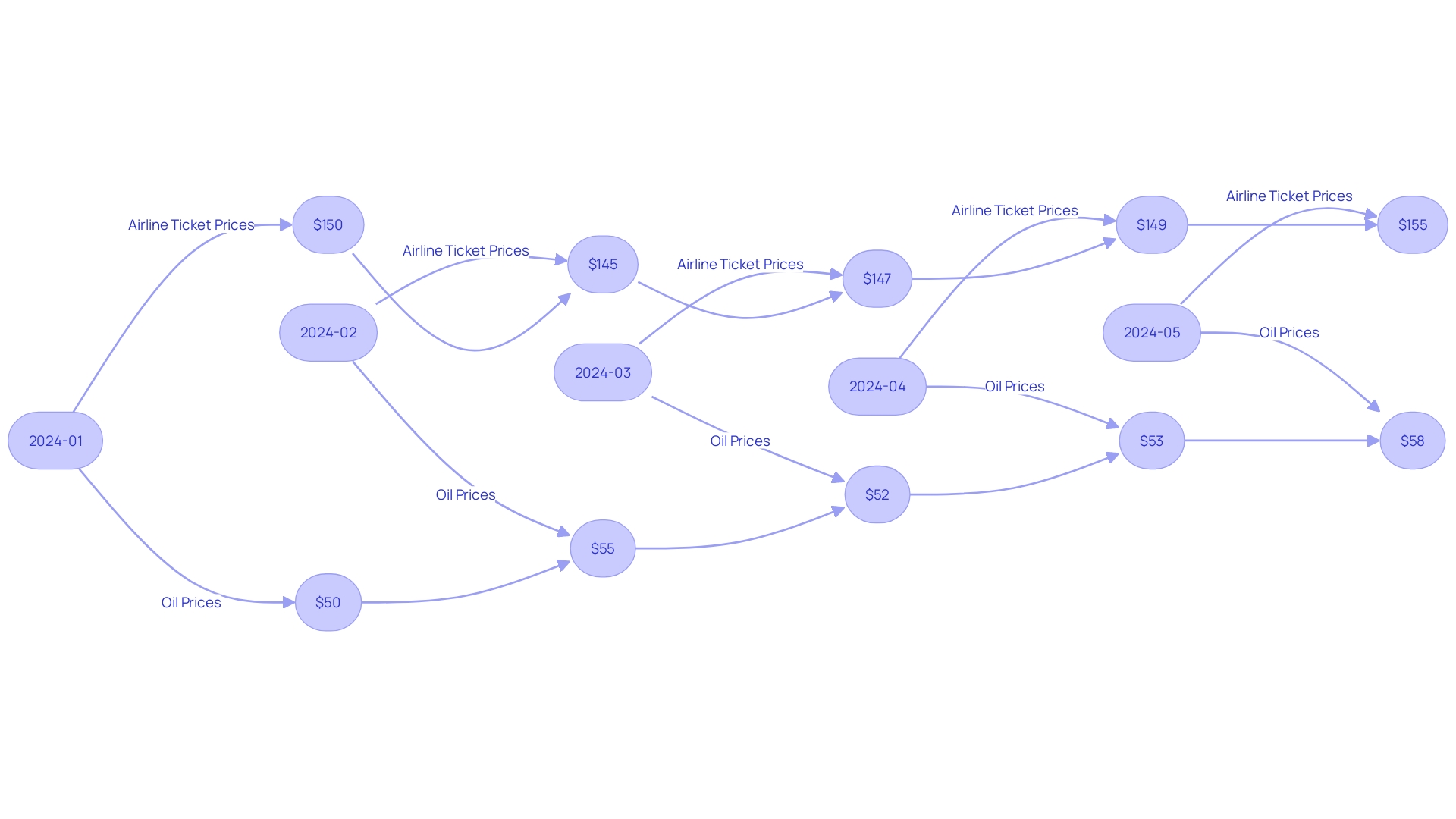
Global and Regional Fuel Price Variations
The landscape of fuel costs for airlines is a complex mosaic influenced by a myriad of factors, including geopolitical shifts, regulatory environments, and local market dynamics. For instance, fluctuations in regional taxes and environmental levies can significantly tilt the scales on fuel prices. A glaring example is the variance in the cost of filling a family-sized vehicle, which can differ by up to £10 solely based on geographical location.
This disparity underscores the immense challenge airlines face in navigating the intricate tapestry of global fuel prices.
In response to these regional price oscillations, airlines with international routes employ strategic fuel procurement methods to mitigate the financial impact. By harnessing comprehensive data and market intelligence, such as the 25,000+ price assessments provided by Argus, airlines gain a clear-eyed view of the prevailing fuel prices, which serve as a reliable barometer for energy value. These insights, coupled with up-to-date information on supply and demand shifts, empower airlines to make informed decisions and optimize their fuel spending.
Moreover, the interplay between supply and demand is a pivotal force in shaping fuel prices. The cut in oil production by key players like Saudi Arabia, which together with other OPEC+ nations resulted in a reduction of almost three million barrels per day, has had a material effect on the market, spurring oil prices upward. These strategic cuts, alongside the growing global demand propelled by a 2.9% projected real GDP growth in 2023, exemplify the dynamic forces that airlines must consider in their fuel procurement strategies.
As fuel prices exhibit sensitivity to a broad spectrum of influences, ranging from local taxation policies to international production adjustments, airlines remain vigilant, continuously adapting their approaches to secure the most favorable terms and maintain cost-efficiency across their operations.
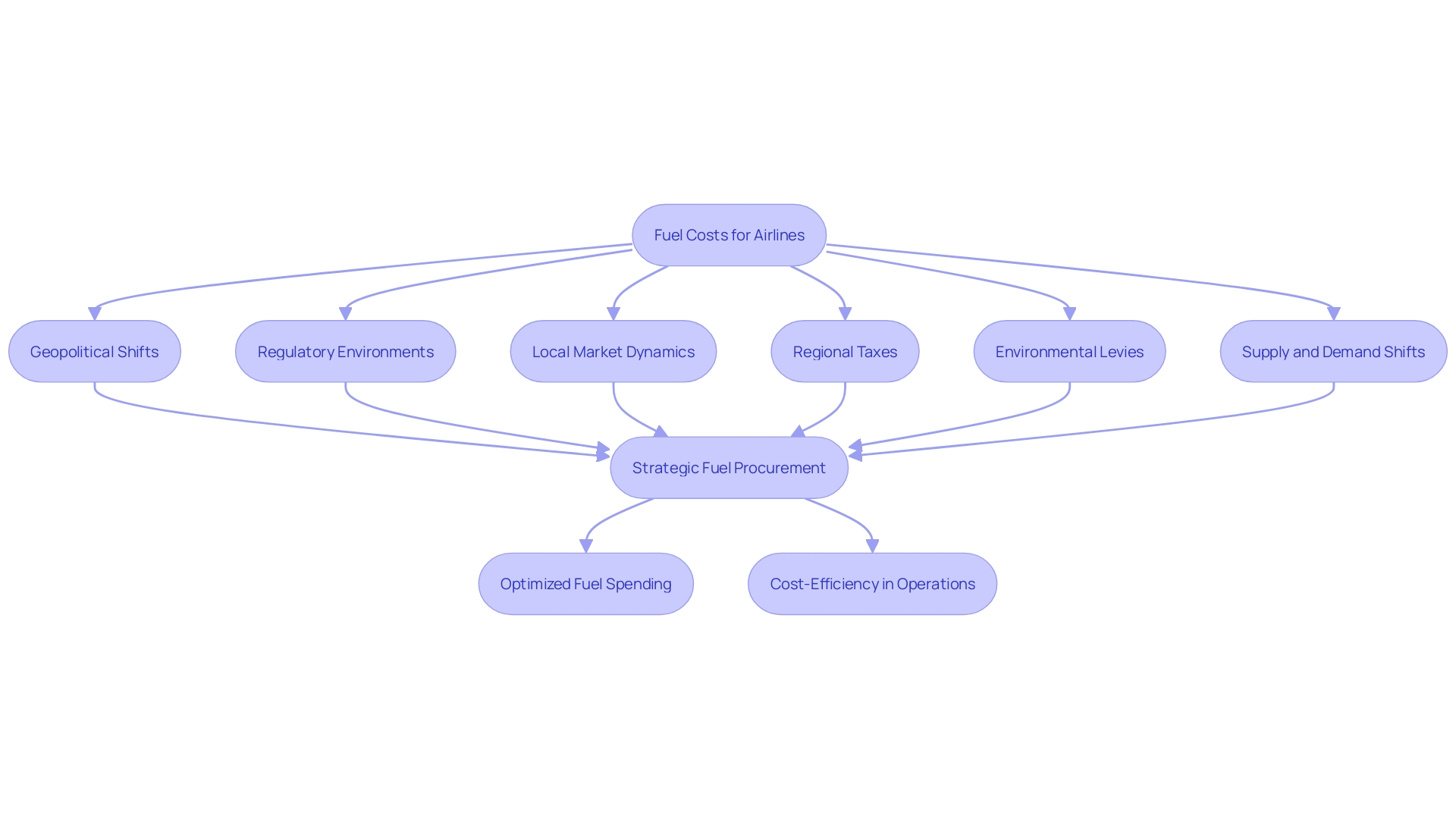
Forecast and Future Outlook for Jet Fuel Prices
Understanding the intricacies of jet fuel pricing is a critical component for anyone involved in the aviation industry. It requires a vigilant eye on several dynamic factors, including the ever-fluctuating crude oil market, geopolitical developments, and the overarching state of the global economy. These elements collectively shape the cost landscape, making it a formidable challenge to pinpoint future fuel prices with absolute certainty.
Nevertheless, diligently analyzing these trends is essential for airlines as they diligently strategize their financial planning and budget allocations.
Recent market activity has underscored this complexity. For instance, the price of West Texas Intermediate Crude (WTIC) has experienced notable shifts, reflecting broader economic trends. When Saudi Arabia and Russia announced reductions in oil production, prices surged, with Brent International hitting $90.04 per barrel, demonstrating how sensitive the airline industry is to such changes.
Moreover, with global oil production at approximately 93 million barrels per day in 2021, and the top ten oil-consuming nations vying for over 73% of this production, even seemingly small cuts have material impacts on market prices.
Concurrently, the aviation sector is witnessing a significant shift towards sustainable aviation fuel (SAF), a renewable, energy-dense alternative to traditional jet fuel. Saf's adoption is gaining momentum, supported by both public and private investments, as the industry seeks to reconcile its growth with environmental stewardship. This transition is not without its challenges, as it requires SAF to be as reliable and compatible with existing jet engines as its fossil fuel counterparts, an endeavor that is vital for the industry that has long been reliant on a specific fuel type.
The journey towards SAF also represents a blend of innovation and practicality. As experts from Prime Movers Lab suggest, the key lies in producing sustainable fuels that are cost-effective, energy-efficient, and scalable to meet global demands. The potential of SAF to replace current fossil fuels without adding more greenhouse gases to the atmosphere is a promising venture that could revolutionize the industry.
In summary, while forecasting jet fuel prices remains an intricate endeavor, it is clear that the aviation industry is at a crossroads with the rise of sustainable fuel options and the need to adapt to a rapidly changing economic and geopolitical landscape. These factors will undoubtedly continue to influence the pricing and availability of jet fuel, shaping the future of air transportation.
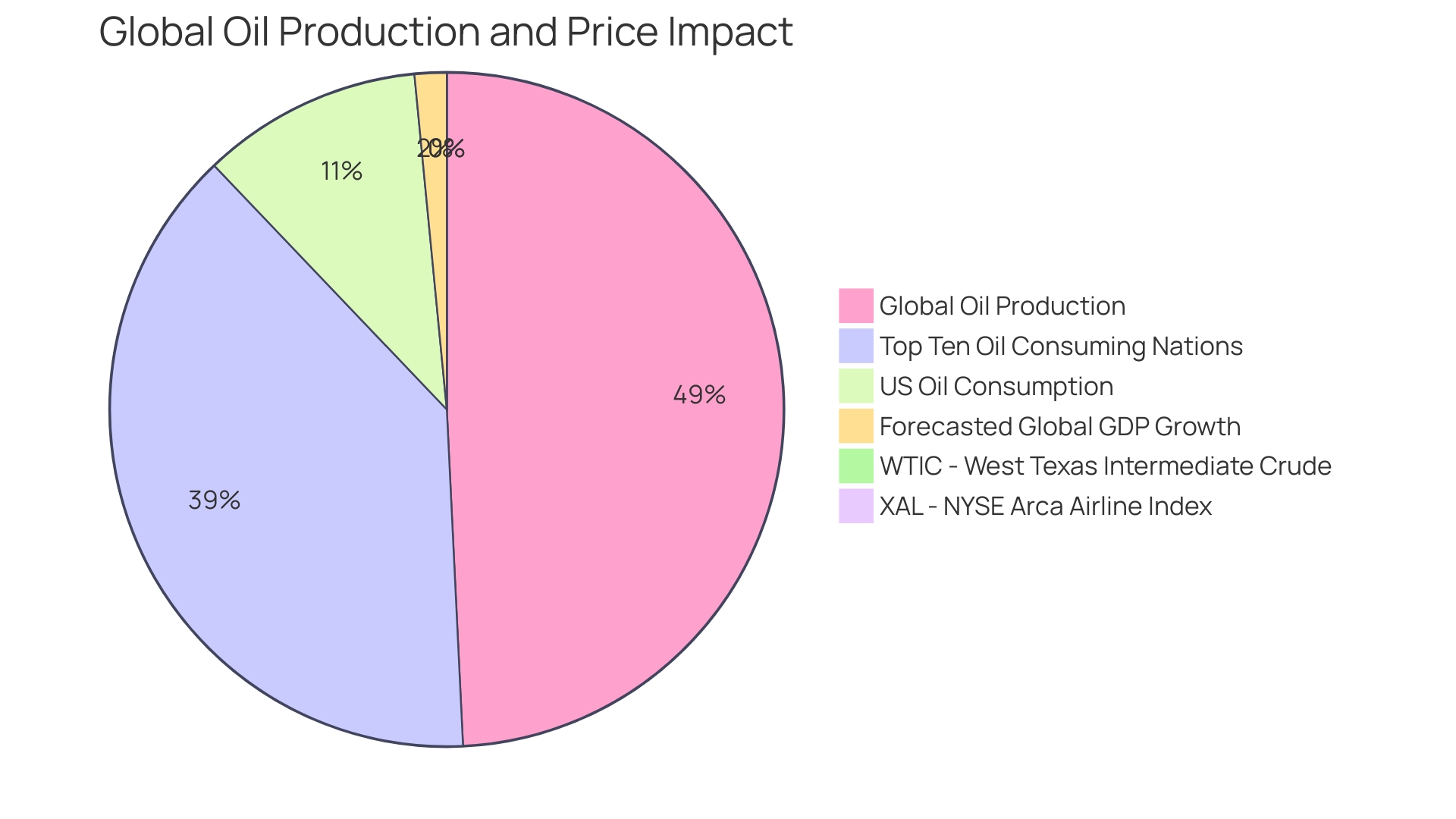
Conclusion
Jet fuel prices in the aviation industry are subject to fluctuations influenced by factors like crude oil market trends, geopolitical tensions, and shifts in air travel demand. As the industry moves towards sustainability and net-zero emissions by 2050, the availability and cost of alternative fuels become increasingly pertinent. Historical trends highlight the sensitivity of the airline sector to oil fluctuations, emphasizing the need for effective fuel cost management.
Understanding the interplay between fuel costs and airline ticket pricing is crucial, as recent trends show that average ticket prices in the United States are not projected to rise substantially due to increased airline capacity and decreased jet fuel costs. The variability in fuel costs among airlines is influenced by fleet size, aircraft fuel efficiency, and fuel hedging strategies. Strategic fuel procurement and market intelligence empower airlines to make informed decisions and optimize fuel spending.
Forecasting jet fuel prices remains complex, with factors like crude oil market trends and geopolitical developments shaping the cost landscape. The aviation industry is witnessing a significant shift towards sustainable aviation fuel (SAF), supported by investments. However, challenges remain in producing cost-effective, energy-efficient, and scalable SAF.
Adapting to market fluctuations, implementing innovative fuel management strategies, and navigating fuel costs are crucial for maintaining competitiveness and financial stability. The future of air transportation is shaped by the interplay between fuel prices, availability of alternative fuels, and the industry's commitment to sustainability.




